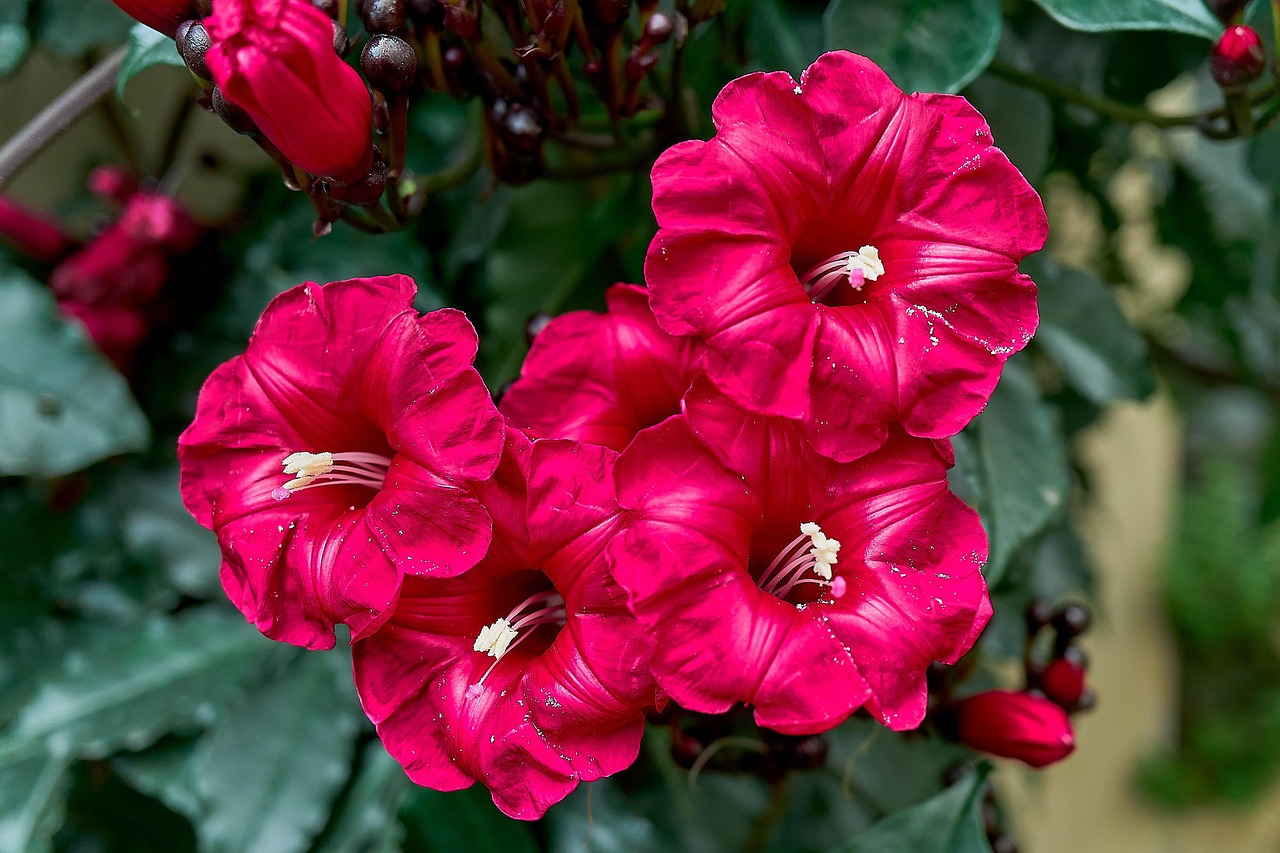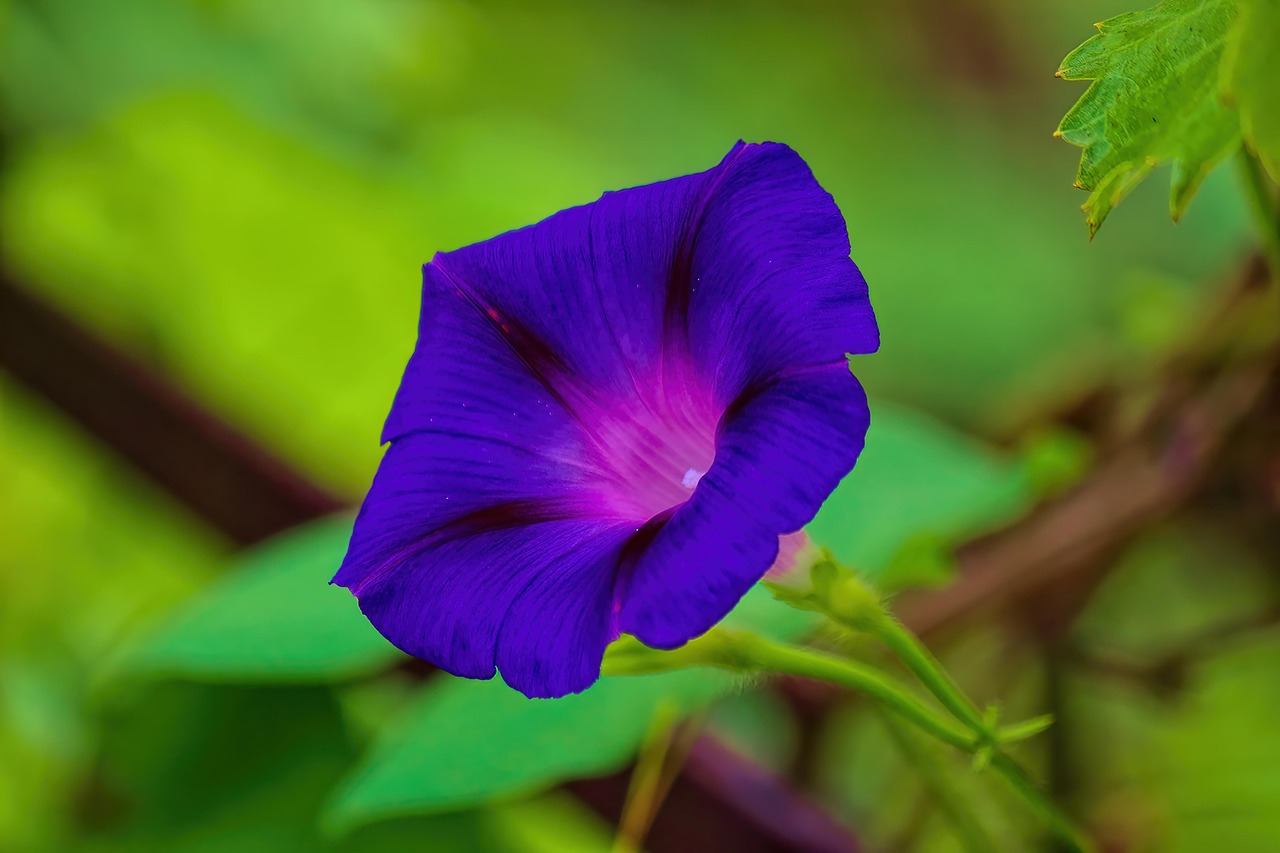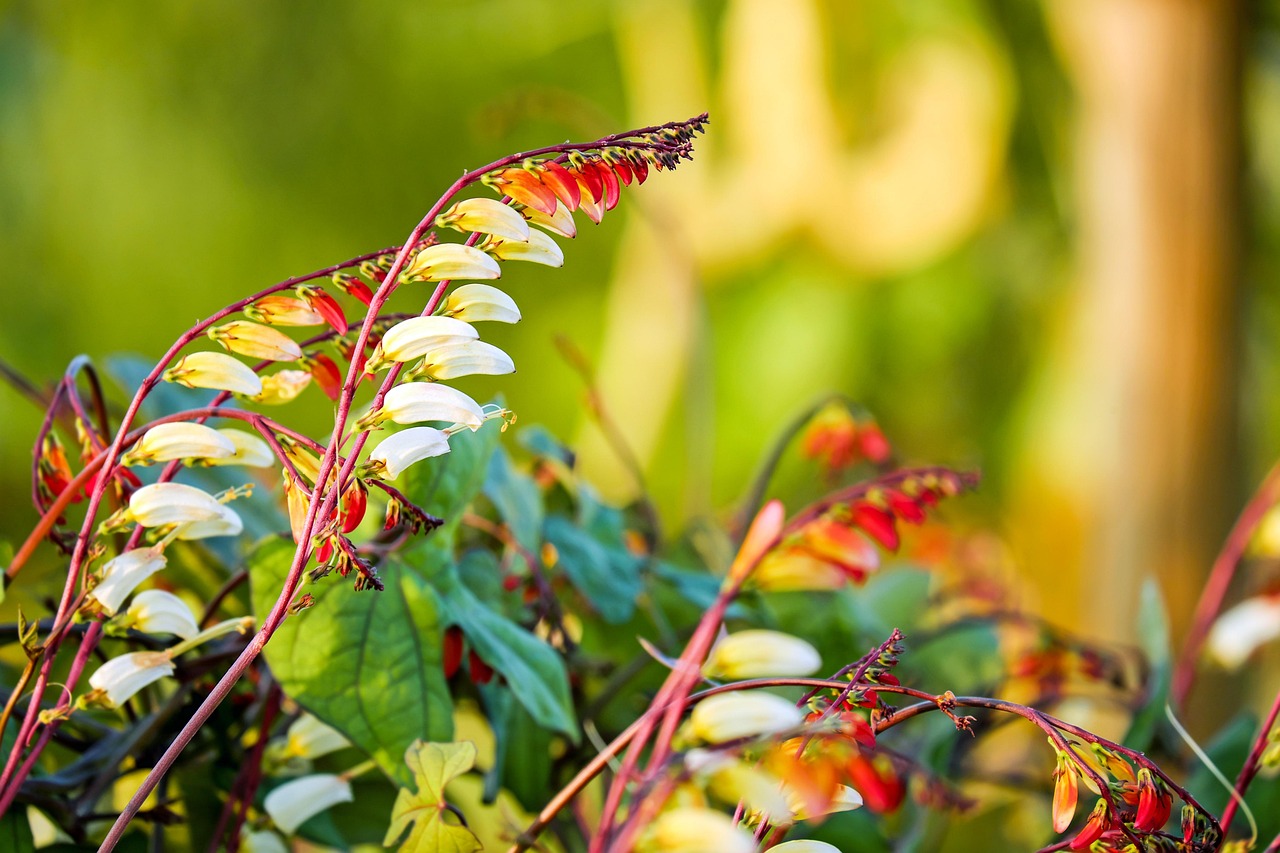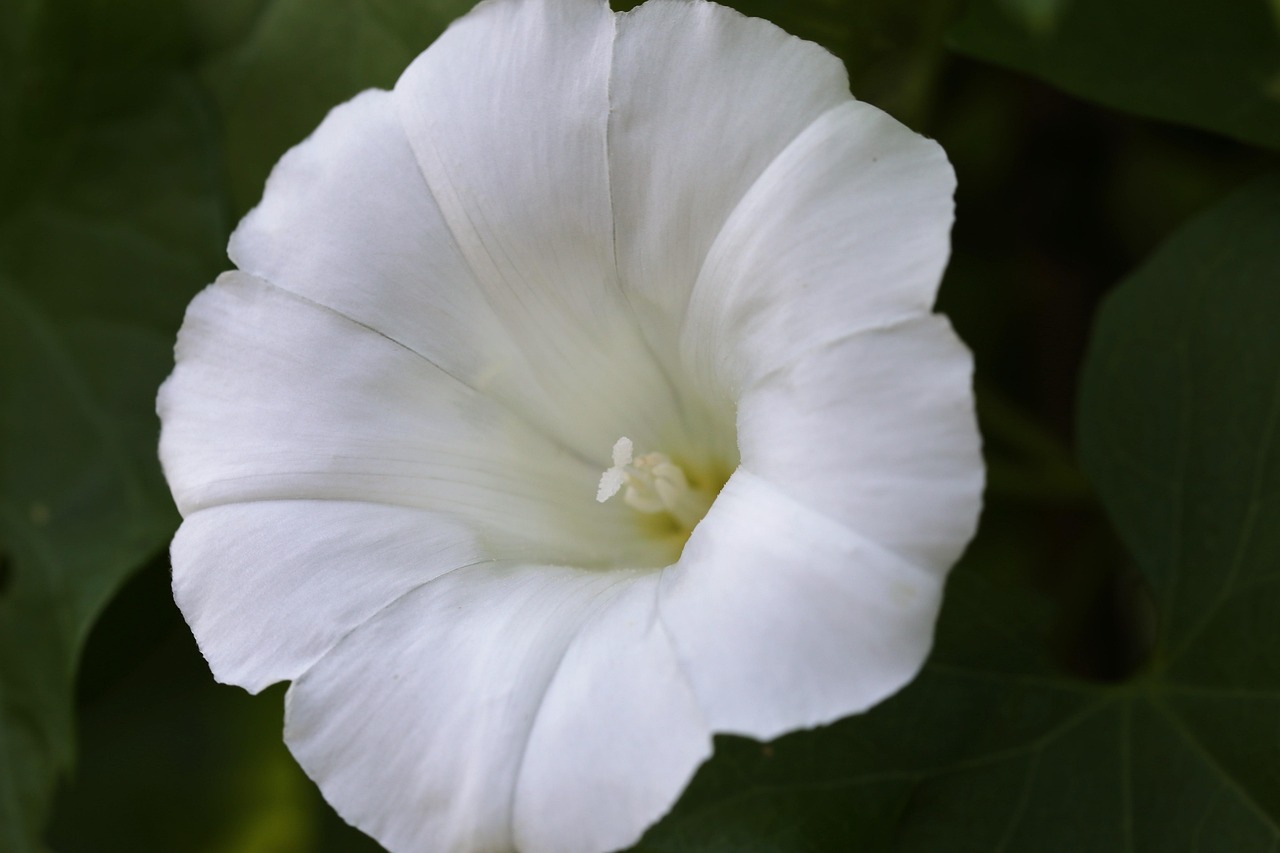Morning Glory | A Flower that Blooms with the Morning Dew, Marking the Beginning of Summer
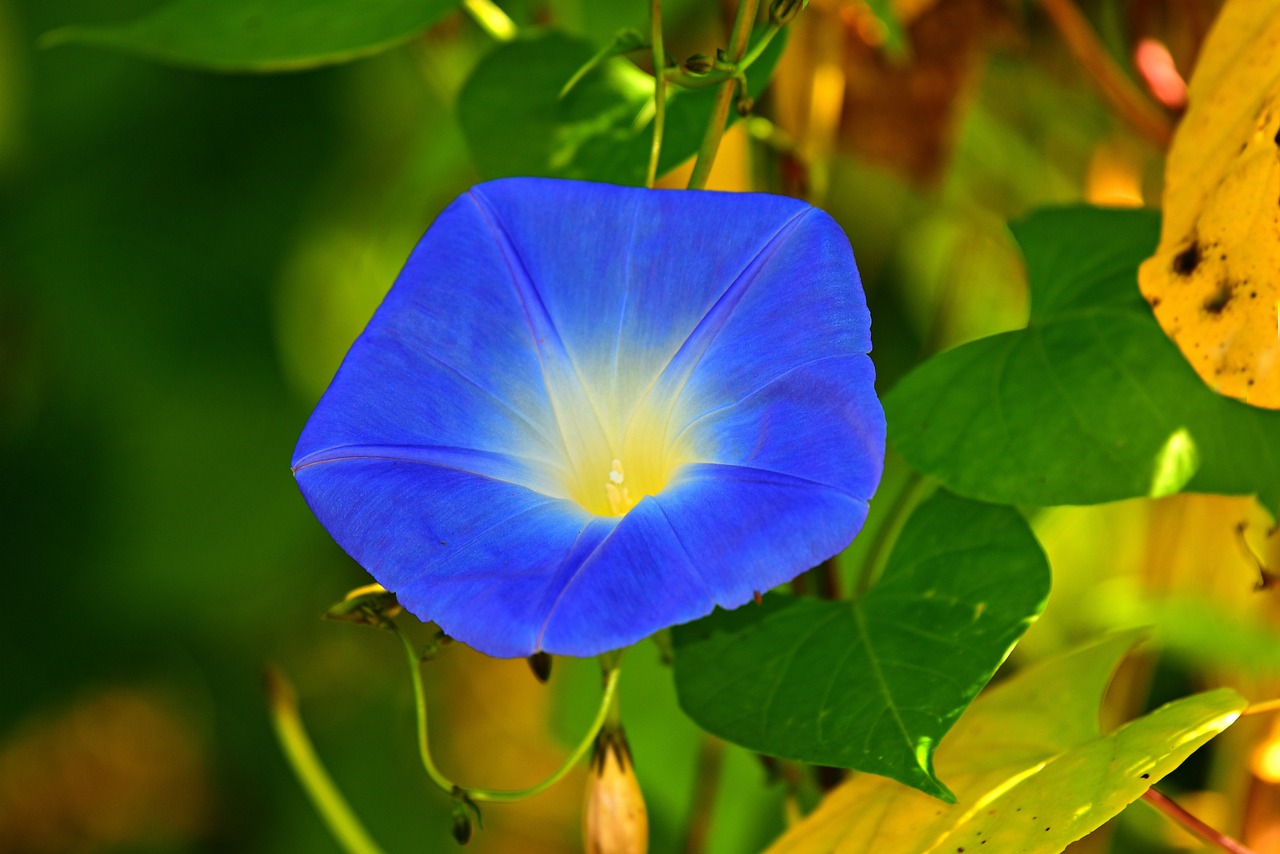
The morning glory (Asagao) is widely cherished as one of the flowers that symbolize summer in Japan. It is especially popular for school summer projects and for cultivation in gardens and balconies.
With its vibrant blossoms and short blooming hours, the morning glory embodies both transience and beauty.
In this article, I will introduce the basic information about morning glories, their cultural background, and practical gardening tips.
Basic Information
- Scientific name: Ipomoea nil
- Family: Convolvulaceae
- Origin: Tropical Asia
- Appearance:
Morning glory is a climbing plant with heart-shaped leaves and large trumpet-shaped flowers. Its blossoms come in blue, purple, pink, and white, with some varieties featuring intricate patterns. As the flowers open at dawn and close by midday, they are known as flowers that brighten summer mornings. - Blooming season:
Summer (July to September), evoking the heat of the season.
Cultural Characteristics Around the World
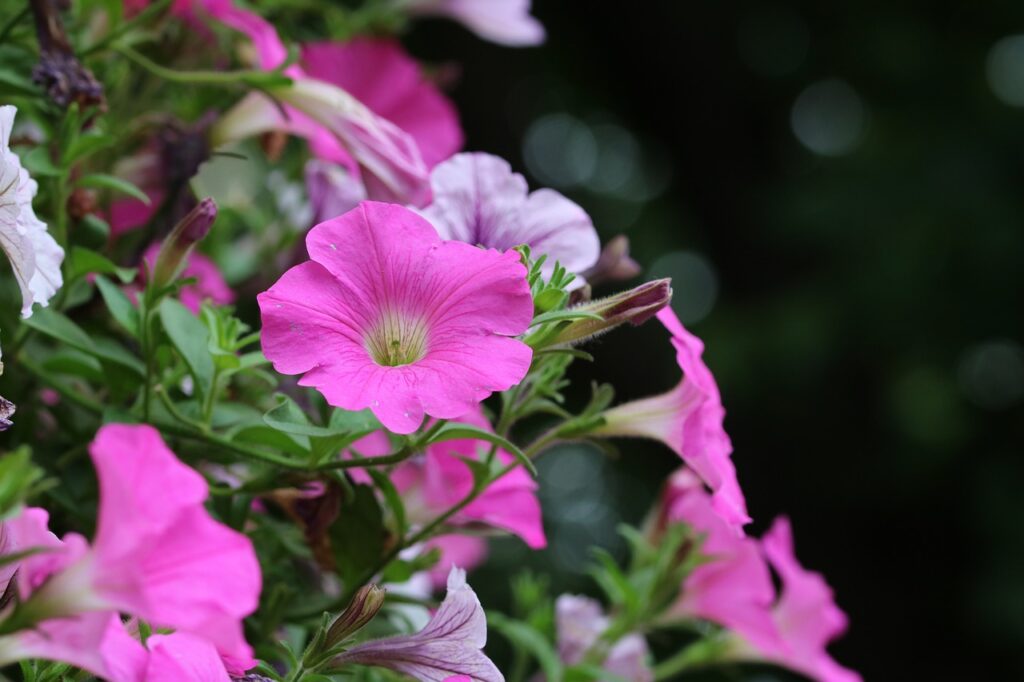
Morning glory holds a particularly significant cultural place in Japan. During the Edo period, selective breeding flourished, leading to the creation of many exquisite varieties.
Even today, morning glory fairs are held in summer, where many people gather to appreciate their beauty.
The flower language of morning glories includes meanings such as “ephemeral love” and “the beauty of brief moments,” reflecting the Japanese sensibility that values both transience and beauty.
In China, morning glory, known as “糸瓜,” symbolizes good fortune and prosperity. Its twining vines also represent the bonds that connect families and communities.
Historical Episodes
It is said that morning glories were introduced to Japan from China during the Nara period, originally as a medicinal herb. While initially valued for medicinal use, they later came to be cultivated for ornamental purposes.
By the Edo period, morning glories became extremely popular among common people, leading to unique varieties through selective breeding.
With their wide range of colors and patterns, they spread as a seasonal symbol of summer. Morning glories frequently appear in haiku and waka poetry, often as an emblem of fleeting summer beauty.
Gardening Advice
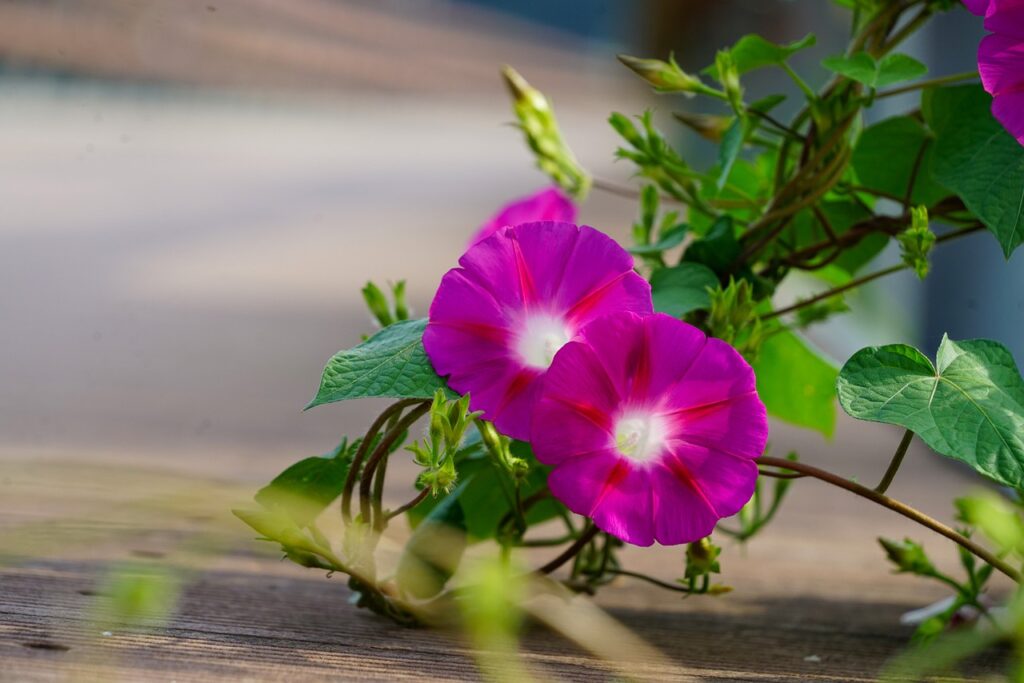
Cultivation Guide
Morning glories thrive in sunny locations. Plant them along fences, in gardens, or in pots with supports to enjoy their vertical growth.
During hot summer days, water them twice daily—morning and evening—to prevent the soil from drying out. To promote germination, soak the seeds in water overnight before planting.
Spring to early summer is the best planting season, and since they grow quickly, they will soon produce beautiful flowers.
Environment and Growing Conditions
Morning glories prefer well-drained soil, with careful watering to avoid both overwatering and excessive dryness. Provide supports such as stakes or nets to help the vines climb.
Apply fertilizer regularly from budding through the flowering season to ensure abundant blooms. To prevent leaf scorch in midsummer, temporarily move them to partial shade if the sun is too intense.
Conclusion
The morning glory is a symbolic flower of Japanese summer, loved for its delicate beauty and fleeting nature. It is relatively easy to grow, making it an excellent choice even for beginners.
I encourage you to grow morning glories this summer and enjoy their vivid blossoms along with the refreshing scenery of the morning.


